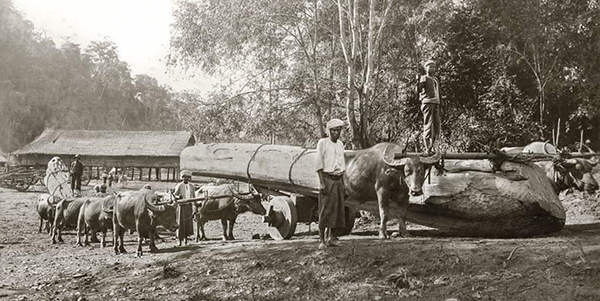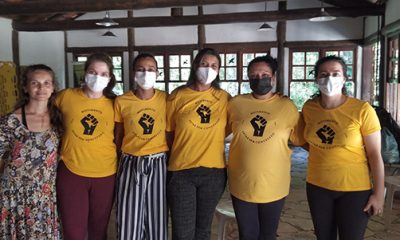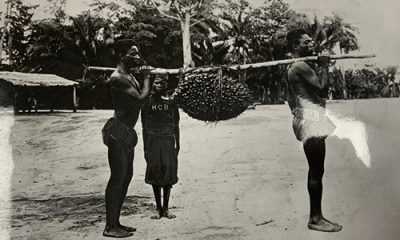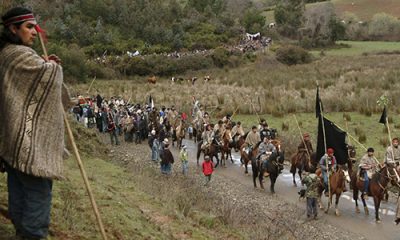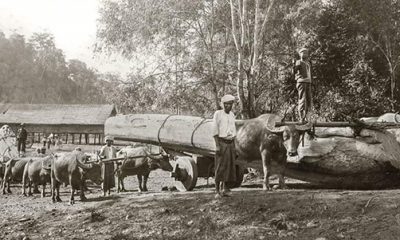SPECIAL REPORTS AND PROJECTS
Colonization and Monoculture Plantations: Histories of Large-Scale ‘Grabbings’
Published
3 years agoon
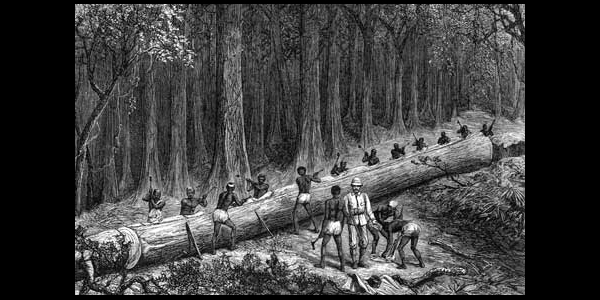
Forest colonization in Thailand.
The control of land was vital to colonisers. It meant wealth, territorial influence, access to ‘resources’ and cheap (and often enslaved) labour. The separation of indigenous inhabitants from their territories was a crucial component that persists until today. The effect of this history continues to influence the management of and conflicts over land.
Forest and agricultural policies the world over tend to regard land as just that: land. When it is perceived in this way, as simply a physical entity, ‘land’ can be easily mapped or divided up or rented out to others to use or regarded as a resource. This view of land emerged out of many decades of land enclosure and dispossession processes that were invariably carried out with force and accompanied by violence. The main purpose was to control land.
Most of the world’s land is today subject to some type of concession regime (be it private or public) in order to regulate its access, control and/or ownership. Concessions have been one of the main ways of organising land, forests and ‘resources’ since colonial times up until modern-day capitalism, granting select actors legal use or control over specific pieces of land while marginalising others. Together with the Bible, colonisers imposed a worldview in which ‘land’ was separate from the rest of ‘nature’, including its inhabitants.
As a result, most resistances against the history of imposed concessions, have also resisted the imposition of this euro-centric understanding of ‘land’, which is in line with the interests of the elites.
This view of ‘land’ has also distorted and undermined other concepts and understandings of life space. In the highlands of Sulawesi, Indonesia, for example, there is no word for ‘land’ in the peoples’ language. There is a word for ‘soil’ and several expressions for forests which express people’s relationship to it. There is no abstract category like ‘land.’ (1) And the concept of ‘land’ is not alone. During a meeting with an Indigenous Wixárika community in Jalisco, Mexico, in 2016, researcher and activist Silvia Ribeiro realised that people were using the Spanish language to refer to concepts such as ‘plant’ and ‘animal’. One community member explained to her: “We do not have a word for all animals that does not include us, or all plants without us, as if everything were one and we were not included.” Each animal, plant and living thing, just like every mountain, river, road—and even rock—has a name; because they are all subjects, part of the same continuum of beings that make up a territory’s community. (2)
Concessions by Dispossession: Controlling Land for Profits
The control of lands and ‘resources’ was vital to the colonisers; it was a strategy for accumulating more wealth, territorial influence, strategic access to ‘resources’ and cheap (and frequently enslaved) labour that allowed empires to flourish. They forcefully displaced, used and/or eradicated indigenous populations in order to have access to their lands. This separation of Indigenous Peoples from their territories and/or of their autonomy over their territories was a crucial component of colonisation, and one that persists in contemporary conservation strategies and forest carbon offset initiatives such as REDD+.
The ways in which colonisers imposed their control over land differed from one colony to another, or differed by the type of resource they were interested in, according to the geography of the colony. They also often changed throughout the colonial period. (3) In the wake of this colonial land grab, companies and wealthy settlers associated with the colonisers appropriated enormous tracts of land and established their business operations. (4)
In Southeast Asia, for example, large-scale plantation concessions were first established across the region by European colonisers for expanding and solidifying territorial control. This included the pacification of civil unrest in rural areas by imposing new estates of control, and the creation of new sources of capital accumulation, via rubber, coffee, tea, sugarcane and coconut plantations. The colonial governments of the region supported the development of rubber plantations by granting loans to private developers, such as Malaysia’s ‘Loan to Planters Scheme’ of 1904, and by granting lands at very cheap prices. In Peninsular Malaysia, areas considered ‘wastelands’ -although occupied and used by indigenous inhabitants– were provided to rubber investors. In French Indochina, where the rubber industry emerged in the 1920s, concessions were practically handed out to investors, which led to expansive land acquisitions that clashed with Indigenous Peoples (5).
The Agrarian Land Law that the Dutch colonial government promulgated in 1870 for what is now known as Indonesia, allowed foreign businesses and elites to occupy massive tracts of land. This Law contains the provision that “all land not held under proven ownership, shall be deemed the domain of the State”. Consequently, the Dutch colonisers claimed ownership of most of the land in their colony while weakening Indigenous Peoples’ control of their ancestral lands. This led to a surge of not only Dutch but also British, North American and Franco-Belgian investments, among others. Some companies had rubber holdings in the area totalling up to 100,000 hectares. This violently confined indigenous inhabitants into smaller and smaller areas of land. The effect of this history can still be seen today, as it continues to influence the character of land tenure in most parts of Indonesia: the State’s disproportionate control over land is still a blight on Indonesia’s politics and economy. (6)
British colonisers established a similar framework in Malaysia, focusing mainly on plantation-based economies that served long-term colonial interests. As researcher Amrita Malhi argues, “‘a regime of property’ replaced ‘customary modes of regulation’ and established the colonial State as the sole and centralised arbiter of land and its distribution”. (7)
However, British colonisers not only sought to consolidate their power through land control, but also to relocate the dispossessed population into more confined spaces. These new concessions of occupation -whether in terms of forest reserves established to study tree species and other productive ‘resources’, monoculture plantation estates or newly created villages for the displaced– divided Malaysia’s ‘nature’ and ‘social’ environments, allowing to generate more profits from the land. (8) In 1902, a Scottish capitalist, William Sime, and an English banker, Henry Darby, founded a trading firm in Malacca, with the participation of local Chinese businesspeople: Sime-Darby, the company which introduced the palm oil tree to Peninsular Malaysia in 1910 (9). Today, this corporation controls more than 620,000 hectares of oil palm plantations in Malaysia and Indonesia.
Another example is how the plantation system was utilised by British colonisation in the Americas as an instrument of land control and political power. The land on which plantations were established in North America and the Caribbean territories was stolen from Indigenous Peoples through cancelled, disregarded and fraudulent treaties, or outright violence. The monoculture plantation system of cash crops represented the early capitalist endeavours of the colonisers, who forcibly brought and sold millions of Africans as slaves to work on these plantations.
As these examples show, category of land concessions must be understood together with the rooted histories of colonisation, dispossession, conflicts and power.
These historical events led to dramatic transformations of forests and their inhabitants – transformations that are and will continue to have long-lasting devastating effects. The colonial framing that was imposed on how to perceive, understand and utilise ‘land’ continues to dominate Western knowledge systems. In a way, concessions, particularly those related to industrial plantations, today still represent spaces where land, livelihoods, law, and government are monopolised by, colonised by, and incorporated into the dominant colonial plantation system (10)
Concessions in Africa: violence, co-optation and racism
In Africa, European colonisers also granted vast land concessions to private companies. In fact, all major colonial powers on the continent used that strategy in order to expand their territorial control. By the mid-1870s, European colonisers had made claims to most parts of Africa. The most notorious case was arguably Belgian King Leopold II’s rule of the ‘Congo Free State’, which was his private colony for more than a decade (1895-1908).
Within Africa, concessions existed in French, British, Belgian, German, and Portuguese colonies (including what is known today as Angola, Botswana, Central African Republic, Cameroon, Chad, DRC, Gabon, Malawi, Mozambique, Namibia, Nigeria, Republic of Congo, Tanzania, Zambia and Zimbabwe). While the form of concessions varied widely, a common element was the primary purpose of concession owners to extract ‘resources’ in the cheapest way possible. They were assigned powers that are typically associated with governments–such as a monopoly over violence and the ability to tax. Some colonies were completely run as concessions. For example, all of Rhodesia (present-day Zimbabwe) was granted as a concession to the British South Africa Company. Additionally, the concessions were often granted in ‘resource’ rich areas. (11)
Extreme labour exploitation, together with coercion and violence, was a primary condition for these companies to accomplish exorbitant profits with the concessions.
In sub-Saharan Africa, concessions to private companies were characterised by co-opting local institutions, replacing uncooperative leaders with compliant ones, and creating ruling lineages. With these tactics, concessions instituted a series of local strongmen who often continue to dominate village politics today. This is especially the case where concessions for monoculture plantations were established. Non-compliant leaders or rebellious chiefs were usually held captive, replaced, shamelessly degraded or murdered. Compliance with the rule of co-opted leaders was then achieved through extreme violence (12). As the European presence was mostly confined to the respective capitals and coastal cities, their ruling via co-opted chiefs and institutions characterised most of the continent.
While destroying local institutions, leadership and the social fabric, Europeans employed a variety of strategies to oppress the many resistance struggles and rebellions. These included forced-labour systems, extortion-level taxation on peasants, subjugation, and mass massacres. All of these conveyed deep consequences on today’s politics and organisations.
In Sierra Leone, for example, paramount chiefs, subordinate chiefs, and headmen ruled the country’s interior throughout the colonial era and were accountable solely to the colonial administration in the capital Freetown. The chiefs’ power endured and even strengthened after independence. Paramount chiefs became part of the state administration, which often brought them into conflict with their role as Chiefs in the traditional governing systems. Throughout the post-independence period, such chiefs controlled land, settled disputes, taxed production, provided some public goods, and allocated votes to their preferred candidates in national elections. (13)
Many newly independent nations in Africa, largely still embedded within the colonial frameworks, decided to nationalise their land, thus appropriating the rights to its use so that they could allocate vast tracts to be used for major agribusiness projects by public or private companies, and even individuals. Millions of hectares were thus legally confiscated (again) from local populations.
In this regard, social and environmental activist and human rights defender Nasako Besingi, explained in a 2018 interview with WRM that “it is wrong for any government to claim ownership over land, discarding communities’ land rights. As a matter of fact, the problem with Africa’s land ordinances is that they were drawn up with the help of colonial masters, who, without the consent of the population, handed over the territory to the presidents, who were not elected by the population but most often handpicked by the colonisers to serve their long-term interests.” (14)
The phrase ‘all land belongs to the State’, he continued, does not imply that land is owned by the government, but rather by the entire population living within the territory of a State. A government is best described as an agency to which the will of the State is formulated, expressed, and carried out, and through which common policies are determined and regulated in terms of political, economical and social development. Fulfilling those tasks does not translate into governmental ownership rights on land and natural resources of the State.
“Since I have been involved in community land rights’ movements and organisations in Cameroon and other countries”, said Besingi, “no single community I met accepted the idea that land is owned by the government. They say affirmatively that the land belongs to their communities and is an ancestral heritage. None of the communities I have worked with agrees with the presence of multinational corporations on their land, claiming that the companies were established through the use of coercive force.”
Categorising land and ‘resources’ as concessions is what has allowed the capitalist system to expand: Concessions for fossil fuel extraction, monoculture plantations, mining operations, large-scale corporate infrastructure, etc. Even the concessions under the ‘public realm’, such as those set aside for ‘conservation’, are entering the same capitalist logic of accumulation and taking control away from local populations.
The establishment of concessions, in fact, has been an attempt to erase the powerful resistance and survival of those who lived on those lands and forests before their imposition. When a concession is granted to a company or NGO, the histories, memories and the web of life that existed or continues to exist on that ‘land’ is made invisible. Concessions make people believe that the legitimate owners or users are not those who originally occupied, protected and worked on those territories. But as a Gitksan Elder remarked in a meeting with Canadian government officials over their claim to ownership of Gitksan territory: “If this is your land, where are your stories?” (15)
As Besingi remarked, a key aspect of communities’ resistance struggles in Africa is “to conquer the fear and ignorance deliberately instilled in the population by colonial and post-colonial administrations… Considering that long-lasting movements are those which are built from the base up and not from the outside, strong resistance can only occur when bonded with community concerns.”
Conflicts over land and resistance to the imposition of concessions today are thus embedded in much deeper historical struggles around opposite understandings of what ‘land’ and ‘nature’ mean. Communities’ reclaiming their autonomy and control over their land and lives are part of this re-occupation.
WRM International Secretariat
(1) Edge Effects, What is Land? A conversation with Tania Murray Li, Rafael Marquese, & Monica White, 2019.
(2) WRM Bulletin, December 2016, From Biodiversity Offsets to Ecosystem Engineering: New Threats to Communities and Territories.
(3) Nancy Lee Peluso & Christian Lund (2011) New frontiers of land control: Introduction, Journal of Peasant Studies, 38:4, 667-681.
(4) Roudart, Laurence and Marcel Mazoyer (2015) “Large-Scale Land Acquisitions: A Historical Perspective” in Large-Scale Land Acquisitions: Focus on South-East Asia, International Development Policy,
(5) Miles Kenney-Lazar and Noboru Ishikawa, Mega-Plantations in Southeast Asia: Landscapes of Displacement, 2019.
(6) Inside Indonesia, A 150-year old obstacle to land rights, 2020.
(7) Amrita Malhi (2011): Making spaces, making subjects: land, enclosure and Islam in colonial Malaya, Journal of Peasant Studies, 38:4, 727-746.
(8) David Baillargeon, Spaces of occupation: Colonial enclosure and confinement in British Malaya, 2021.
(9) Robert Fitzgerald, The Rise of the Global Company. Multinationals and the Making of the Modern World, 2016, Cambridge University Press
(10) Edge Effects, What is Land? A conversation with Tania Murray Li, Rafael Marquese, & Monica White, 2019.
(11) Sara Lowes and Eduardo Montero, Concessions, Violence, and Indirect Rule: Evidence from the Congo Free State, 2020.
(12) Idem (11)
(13) VoxDev, Historical legacies and African development, 2019.
(14) WRM Bulletin, December 2018, A Reflection from Africa: Conquer the Fear for Building Stronger Movements.
(15) J. Edward Chamberlin, If This Is Your Land, Where Are Your Stories?, Penguin Random House Canada.
Original Source: World Rainforest Movement
Related posts:
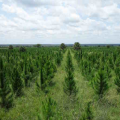
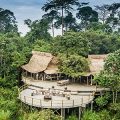 Conservation Concessions as Neo-Colonization: The African Parks Network
Conservation Concessions as Neo-Colonization: The African Parks Network
 Large-scale irrigation facilities to be built in Atari Basin Area.
Large-scale irrigation facilities to be built in Atari Basin Area.
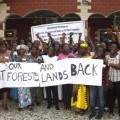 Monoculture tree plantations are a false climate solution
Monoculture tree plantations are a false climate solution
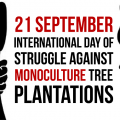 Witness Radio – Uganda, Community members from Mozambique and other organizations around the world say NO to more industrial tree plantations
Witness Radio – Uganda, Community members from Mozambique and other organizations around the world say NO to more industrial tree plantations
SPECIAL REPORTS AND PROJECTS
Seizing the Jubilee moment: Cancel the debt to unlock Africa’s clean energy future
Published
7 days agoon
July 12, 2025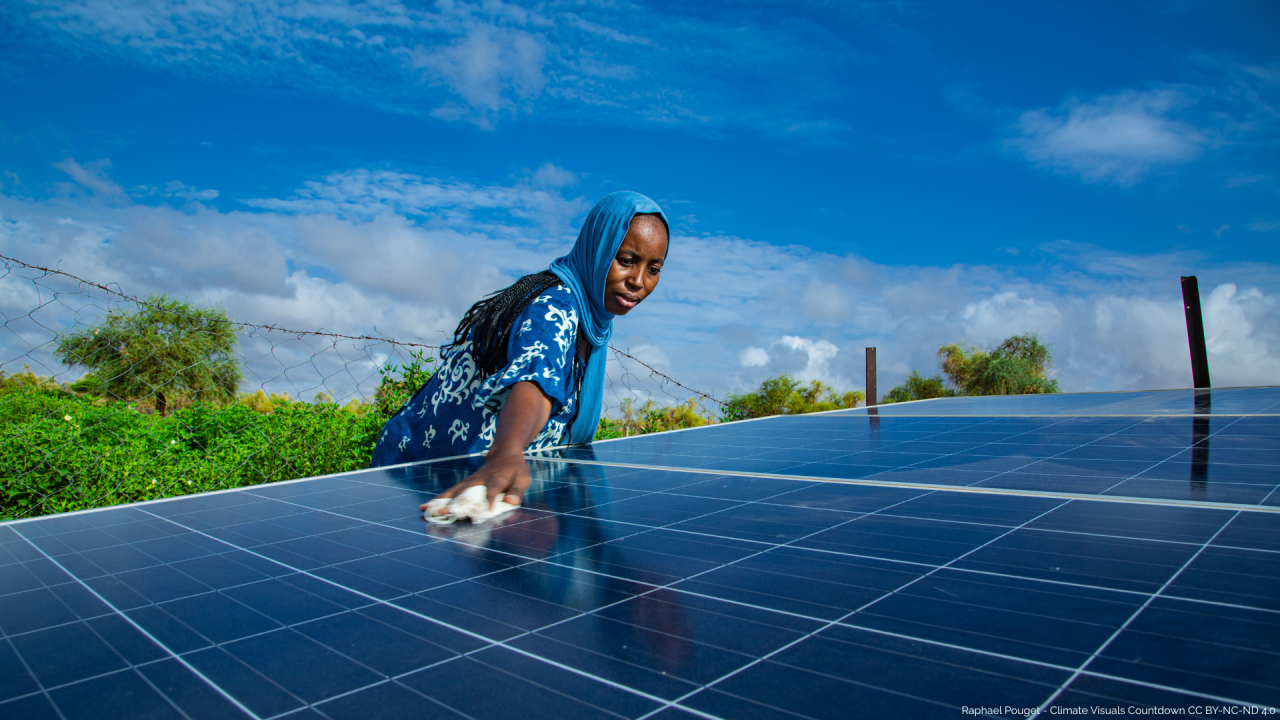
Africa has the resources and the vision for a just energy transition, but it is trapped in a financial system structured to take more than it gives. In this blog, we outline how debt burdens and climate impacts are holding the continent back, and looks at the role of institutions that shape the global financial order, like the World Bank, African Development Bank and IMF. As these institutions and governments meet in Seville for FfD4, we urge them to heed people’s calls for reform: cancel the debt, redistribute the wealth, and fund the just transition. — By Rajneesh Bhuee and Lola Allen
With 60% of the world’s best solar energy resources and 70% of the cobalt essential for electric vehicle batteries, the African continent has everything it needs to power its development and become a global reference point for sustainable energy production. That potential, however, remains largely untapped; Africa receives just 2% of global renewable energy investment. As the UNCTAD Secretary-General Rebeca Grynspan warns, too many countries are forced to “default on their development to avoid defaulting on their debt.”
The cost of servicing unsustainable debts, layered with new loan-based climate and development finance, leaves governments with little fiscal space to invest in clean energy, health or education. In 2022 alone, African countries spent more than $100 billion on debt servicing, over twice what they spent on health or education. Add to this the $90 billion lost annually to illicit financial flows, and the reality is stark: more money leaves the continent through financial leakages (also including unfair trade and extractive investment) than comes in through productive, equitable and development-oriented finance.
These are not isolated problems. They reflect a financial system that has been built to serve global markets rather than people. Between 2020 and 2025, four African countries defaulted on their external debts, that is, they failed to make scheduled repayments to creditors like the International Monetary Fund or bondholders, triggering fiscal crises and, in several cases, IMF interventions tied to austerity measures. Pope Francis’ Jubilee Report (2025) and hundreds of civil society groups argue that these defaults reflect the deeper crisis of unsustainable debt. Meanwhile, 24 more African countries are now in or near debt distress. None have successfully restructured their debts under the G20 Common Framework, a mechanism launched in 2020 to facilitate debt relief among public and private creditors. The Framework has been widely criticised for being slow, opaque and ineffective. According to Eurodad, without urgent systemic reforms, up to 47 Global South countries, home to over 1.1 billion people, face insolvency risks within five years if they attempt to meet climate and development goals.
How debt undermines the just energy transition
Debt has become both a driver and a symptom of climate injustice. Countries that did the least to cause the climate crisis now pay the highest price, twice over. First, they suffer the impacts. Second, they must borrow to rebuild.
This is happening just as concessional finance disappears. The US has withdrawn from the African Development Fund’s concessional window (worth $550m), yet maintains influence over private-sector lending. It has also opted out of the UN Financing for Development Conference (FfD4), a historic opportunity to confront the injustice of our financial system. Meanwhile, European governments, though now celebrating themselves as defenders of multilateralism, played a key role in weakening the outcome of FfD4, slashing aid budgets, redirecting funds toward militarisation, and systematically blocking proposals for a UN-led sovereign debt workout mechanism. With rising insecurity and geopolitical tensions, these actions send a troubling signal: at a moment when global cooperation is urgently needed, many Global North countries are stepping back from efforts to fix the very system that is preventing climate justice and clean energy for much of the Global South.
A role for the AfDB?
The African Development Bank (AfDB), under incoming president Sidi Ould Tah , has made progressive commitments of $10 billion to climate-resilient infrastructure and $4 billion to clean cooking. Between 2022 and 2024, one in five (20%) of its energy dollars were grants, far exceeding The World Bank ‘s 10% and the Asian Development Bank (ADB) ‘s 3.8%. The AfDB has also backed systemic reform: for example, calling for Special Drawing Rights (SDR) redistribution, launching an African Financial Stability Mechanism that could save up to $20 billion in debt servicing, and consistently advocating for fairer lending terms.
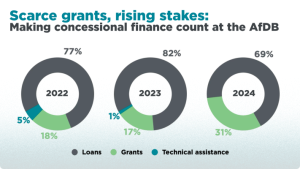
Yet, even progressive leadership struggles within a broken system. Recourse’s recent research shows that AfDB energy finance dropped 67% in 2024, from $992.7 million to just $329.6 million. Of this, a staggering 73% went to large-scale infrastructure like mega hydro dams and export-focused transmission lines, ‘false solutions’ that bypass the energy-poor and displace communities. Meanwhile, support for locally-appropriate, decentralised renewable energy systems such as mini-grids, solar appliances, and clean cookstoves plummeted by over 90%, from $694.5 million to just $61 million, with only five of 13 projects directly addressing energy access in 2024.
Africa received just 2.8% of global climate finance in 2021–22, and what is labelled as “climate finance” is often little more than a Trojan horse: resource-backed loans, debt-for-nature swaps, and blended finance instruments that shift risk to the public while offering little real benefit to local communities. These mechanisms, promoted as “innovative” or “green”, often entrench financial dependency and fail to deliver meaningful change for energy-poor or climate-vulnerable groups.
Meanwhile, initiatives that could build green industry and renewable capacity across Africa are falling short in both scale and speed. Flagship projects, such as the EU’s Global Gateway, have failed to drive green industrialisation in Africa, and carbon markets continue to delay real emissions reductions, subsidise fossil fuel interests, and entrench elite control over land and resources.
Mission 300: Ambition or another missed opportunity?
In this constrained context, the AfDB and World Bank launched Mission 300, an ambitious plan to connect 300 million Africans to electricity by 2030. Pragmatic goals like electrification are crucial, but the story beneath the surface of Mission 300 raises concern. Far from serving households, many projects under the initiative appear more aligned with export markets and large-scale energy users, echoing decades of infrastructure that bypasses those most in need.
Mission 300 can still be transformative, but only if it centres people, not profits. Energy access must begin with those who need it most: women and youth, especially in rural communities. Across Africa, many women cook over open fires, walk hours to gather fuel, and care for families in homes without light or clean air. This is not just an inconvenience, it is structural violence and policy failure.
Yet most energy finance still flows to centralised grids, mega-projects, and sometimes fossil gas (misleadingly called a “transition fuel”). These do little to address energy poverty. Locally appropriate decentralised renewable energy solutions, solar-powered appliances, clean cookstoves, and mini-grids can deliver faster, cheaper, and more equitable impact. Mission 300 must invest in such solutions, without adding to existing debt problems. It should support national policy design, for example, by ensuring that energy policy is responsive to women’s needs, making use of gender-disaggregated data and community consultation.
The Jubilee: A year for action
In a year already marked as a Jubilee moment, African leaders have demanded reform: including a sovereign debt workout mechanism and a UN Tax Convention to end illicit financial flows. Yet as AFRODAD has documented, these demands were blocked at the FfD4 negotiations by wealthy nations—notably the EU and UK—even as climate impacts grow and fiscal space shrinks.
This is not just about finance. It is about reclaiming sovereignty. The incoming AfDB president and all the multilateral development banks face a choice: continue financing extractive, large-scale projects that serve foreign interests, or invest in decentralised, gender-responsive, pro-people solutions that shift power and ownership.
Africa has the resources. What it needs is fiscal space, public-led finance, and global rules that prioritise people and planet over profit. The Jubilee call is clear: cancel the debt, redistribute the wealth, and fund the just transition.
Source: Recourse through LinkedIn Account Recourse.
Related posts:

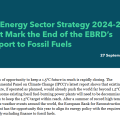 Statement: The Energy Sector Strategy 2024–2028 Must Mark the End of the EBRD’s Support to Fossil Fuels
Statement: The Energy Sector Strategy 2024–2028 Must Mark the End of the EBRD’s Support to Fossil Fuels
 African Development Bank decides not to fund Kenya coal project
African Development Bank decides not to fund Kenya coal project
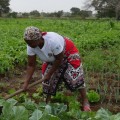 Africa must unlock the power of its women to save climate change
Africa must unlock the power of its women to save climate change
 PFZW scraps funding from Total and others for failure to transition into a cleaner energy mix.
PFZW scraps funding from Total and others for failure to transition into a cleaner energy mix.
SPECIAL REPORTS AND PROJECTS
Activism on Trial: Despite the increasing repressive measures, Uganda’s EACOP protesters are achieving unexpected victories in the country’s justice systems.
Published
2 weeks agoon
July 8, 2025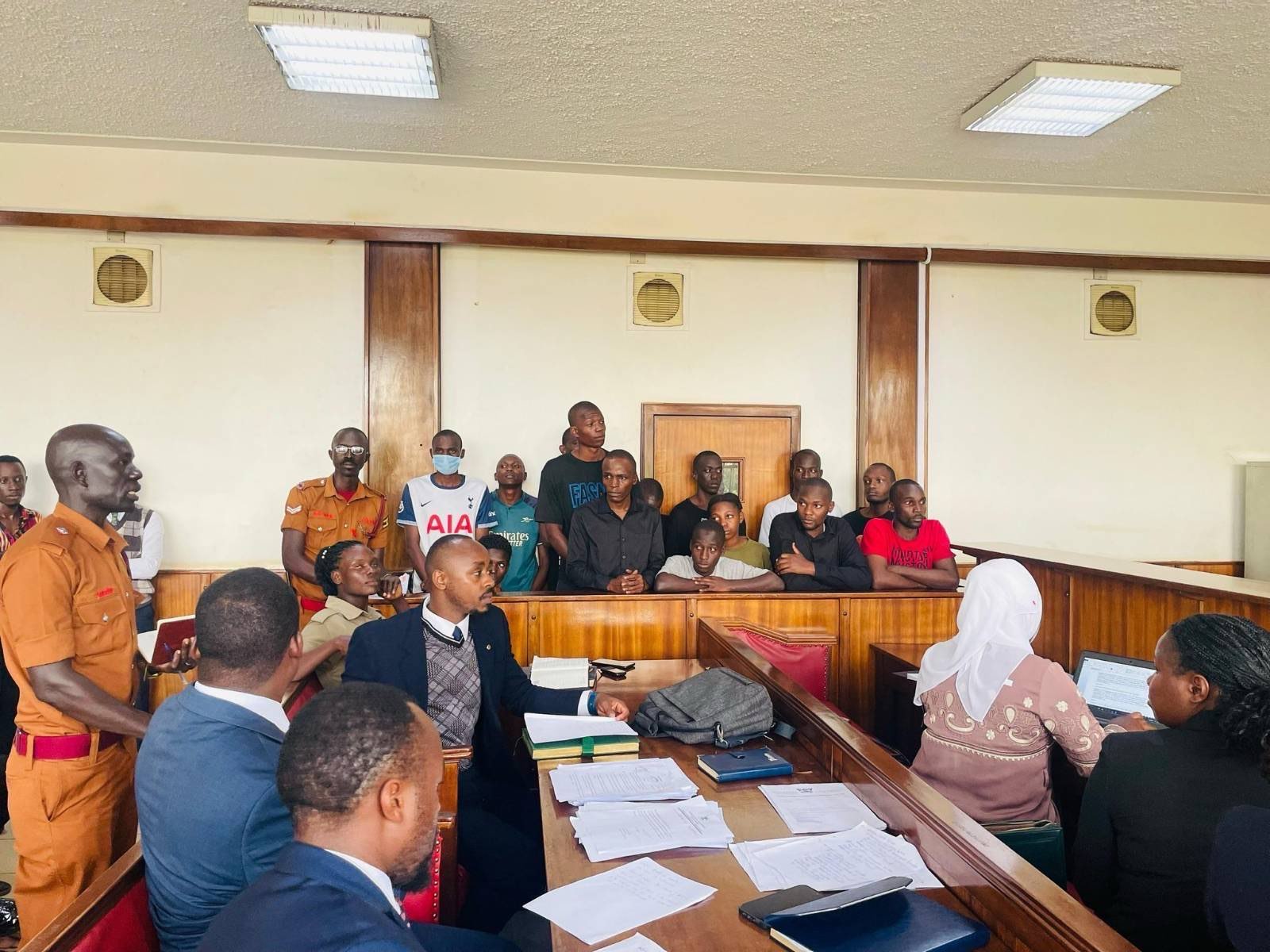
Special report by the dedicated and thorough Witness Radio team, offering a comprehensive and in-depth overview of the situation.
As Uganda moves forward with the controversial East African Crude Oil Pipeline (EACOP), a wave of arrests, intimidation, and court cases has targeted youth and environmental activists opposing the project. However, there is a noticeable and encouraging shift within Uganda’s justice systems, with a growing support for the protesters, potentially signaling a change in the legal landscape.
The EACOP project, stretching 1,443 kilometers from Uganda to Tanzania, has been hailed by the government as a development milestone. However, human rights groups and environmental watchdogs have consistently warned that the project poses serious risks to communities, biodiversity, and the climate. Concerns over land grabbing, inadequate compensation, and ecological degradation have mobilized a new generation of Ugandan activists.
Since 2022, as opposition to EACOP grew louder, Ugandan authorities have intensified a campaign of arrests and legal harassment. Police, military, and currently the Special Forces Command, a security unit tasked with protecting Uganda’s president, have been involved in brutal crackdowns on these activists.
Yuda Kaye, the mobilizer for students against EACOP, believes the criminalization is an attempt by the government to weaken their cause and silence them from speaking out about the project’s negative impacts.
“We are arrested just for raising the project concerns, which affect our future, the local communities, and the environment at large. Oftentimes, we are arrested without reason. They just round us up at once and brutally arrest us, Mr. Kaye reveals, in an interview with Witness Radio’s research team.
Activists have faced a litany of charges, including unlawful assembly, incitement to violence, public nuisance, and criminal trespass. Many of these charges have lacked substantive evidence and have been dismissed by the courts or had their files closed by the police after prolonged delays.
A case review conducted by Witness Radio Uganda reveals that Uganda’s justice system is being used to suppress the activities of youth activists opposing the project, rather than convicting them. However, despite the system being used to silence them, it has often found no merit in these cases.
Of a sample of 20 documented cases since 2022 involving the arrest of over 180 activists, 9 case files against the activists have either been dismissed by courts or closed by the police due to a lack of prosecution, another signal indicating the relevance of their work, while 11 cases remain ongoing.
The chart below shows trends in arrests, dismissed cases, and ongoing cases involving EACOP activists in Uganda from 2022 to May 2025.
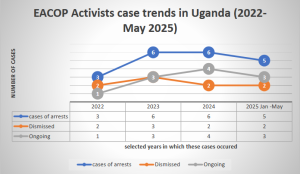
The review was conducted with support from the activists themselves and their lawyers. It involved a desk review and analysis of Witness Radio articles concerning the arrests of defenders and activists opposing the EACOP project.
Witness Radio’s analysis reveals a concerning trend as the majority of cases involving these activists are stalling at the police level rather than progressing to the courts of law. This suggests that the police have not only criminalized activism but are also playing a syndicate role in deliberately prolonging these cases under the excuse of ongoing investigations.
“While both the police and judiciary are being used to suppress dissent, the courts have at least demonstrated a degree of fairness, having dismissed at least 78% of cases that fall within their jurisdiction. In contrast, the police continue to hold 73% of activist cases in limbo, citing investigations as justification for indefinite delays.” The research team discovered.

Witness Radio’s analysis further shows that in most of these cases, the state has failed to produce witnesses or evidence to convict the activists, adding that the charges are often just tools of intimidation. Additionally, this is accompanied by more extended periods during which decisions are being made.
Despite the intense crackdown, it is evident that these activists are winning, as no proven record of sentencing has been observed. Instead, these cases are often marred by delays in court or at the police, and in the end, some have been dismissed. This implies that protest marches and petition deliveries serve a purpose; the state just needs to listen to their concerns and formulate possible solutions to address them,” said Tonny Katende, Witness Radio Uganda’s Research, Media and Documentation Officer.
According to Article 29(1)(d) of the Constitution of Uganda, every individual has the right to “assemble and demonstrate together with others peacefully and unarmed and to petition.” Additionally, Article 20 emphasizes that fundamental rights and freedoms “are inherent and not granted by the State.” Yet activists report that police regularly deny them the right to exercise their rights as guaranteed.
At a February 2025 press conference, EACOP activists strongly condemned the police’s continued unlawful arrests of demonstrators exercising their constitutional rights and case delays. This followed escalating crackdowns that added to the tally of over 100 activists arrested in 2024 alone.
“We strongly condemn these arrests. Detaining demonstrators does not address the concerns affecting grassroots communities impacted by oil and gas projects,” declared the group, led by Bob Barigye, who remains in prison on another charge still linked to his opposition to EACOP.
An interview with Mr. Yuda Kaye, a mobilizer from the Students Against EACOP Movement, confirmed that the ongoing dismissals only reaffirm the legitimacy of their resistance.
“These cases are dismissed because the government and its justice systems don’t have any grounds to convict us. This justifies the fact that the issues we’re discussing are real. We only seek accountability, but since the government has power, they criminalize us and silence us,” Mr. Kaye added.
According to Kaye, the intimidation is real, but so is their commitment. “We are called enemies of progress, but we’re only protecting our future and that of our country. We’ve often proposed alternatives, but the government doesn’t want them.” He re-echoes.
Despite this, activists say their rights are routinely violated. Witness Radio Uganda attempted to contact the police spokesperson, Mr. Kituuma Rusooke, but known numbers were unreachable, and messages sent to him went unanswered.
In a separate interview with Mr. James Eremye Mawanda, the Judiciary Spokesperson, he acknowledged the pattern of dismissals and delays.
“As the Judiciary, we listen to cases, and where there is no evidence to support the case, a decision is made. When a crime is allegedly committed and an individual is brought before the court, the courts upholding the rule of law shall administer justice,” he said.
According to Witness Radio’s analysis, 2025 has seen the most dismissals so far, with six cases concluding, reinforcing the view that criminalization is used more for intimidation than as a means of legal redress. “Whereas the arrests took place in separate years, most of the dismissals have happened in 2025,” the research team further highlighted.
Mr. Brighton Aryampa, the team lead of Youth for Green Communities, one of the organizations that provide legal representation for Stop-EACOP activists, highlighted that the criminalization of Ugandan activists undermines Uganda’s democratic principles of free expression and open discourse.
“The government, in bed with oil corporations Total Energies and CNOOC, is deliberating using legal action against Stop EACOP activists to suppress dissent, free speech, right to peaceful protest, and against public participation. This is tainting Uganda as a country that undermines the democratic principles of free expression and open discourse, as hundreds of Stop EACOP activists have been arrested, charged, and some tried by a competent court. However, no one has been found guilty of the fabricated offense usually slapped on them.” He said in an interview with Witness Radio.
Counsel Aryampa further advised that the practice of powerful companies and businesses blackmailing and corrupting the Ugandan government to develop harmful projects while ignoring all social warnings and human rights abuses must be stopped.
The pressure exerted by these activists, both locally and internationally, has slowed the EACOP project. It has also led to bankers and insurers withdrawing from financing or insuring the project. According to Stop EACOP campaigners, more than 40 international banks and 30 global insurance firms, including Chubb, have distanced themselves from the controversial pipeline project, citing human rights and climate concerns raised by these activists.
Meanwhile, as the activism grows, the number of arrests is rising. Within just the first six months of 2025, over 40 activists have been criminalized for their activism. Among them is KCB 11, a group of eleven activists that was arrested at the KCB offices in April 2025. The group has spent over two months on remand, despite their lawyers’ pleas for bail to be granted.
Related posts:
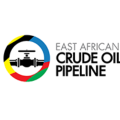
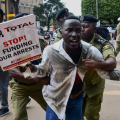 EACOP activism under Siege: Activists are reportedly criminalized for opposing oil pipeline project in Uganda.
EACOP activism under Siege: Activists are reportedly criminalized for opposing oil pipeline project in Uganda.
 EACOP: The trial of 20 environmental activists failed to take off, and now they want the case dismissed for lack of prosecution.
EACOP: The trial of 20 environmental activists failed to take off, and now they want the case dismissed for lack of prosecution.
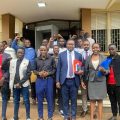 Milestone: Another case against the EACOP activists is dismissed due to the want of prosecution.
Milestone: Another case against the EACOP activists is dismissed due to the want of prosecution.
 The latest: Another group of anti-EACOP activists has been arrested for protesting Stanbic Bank’s financing of the EACOP Project.
The latest: Another group of anti-EACOP activists has been arrested for protesting Stanbic Bank’s financing of the EACOP Project.
SPECIAL REPORTS AND PROJECTS
‘Left to suffer’: Kenyan villagers take on Bamburi Cement over assaults, dog attacks
Published
4 months agoon
March 22, 2025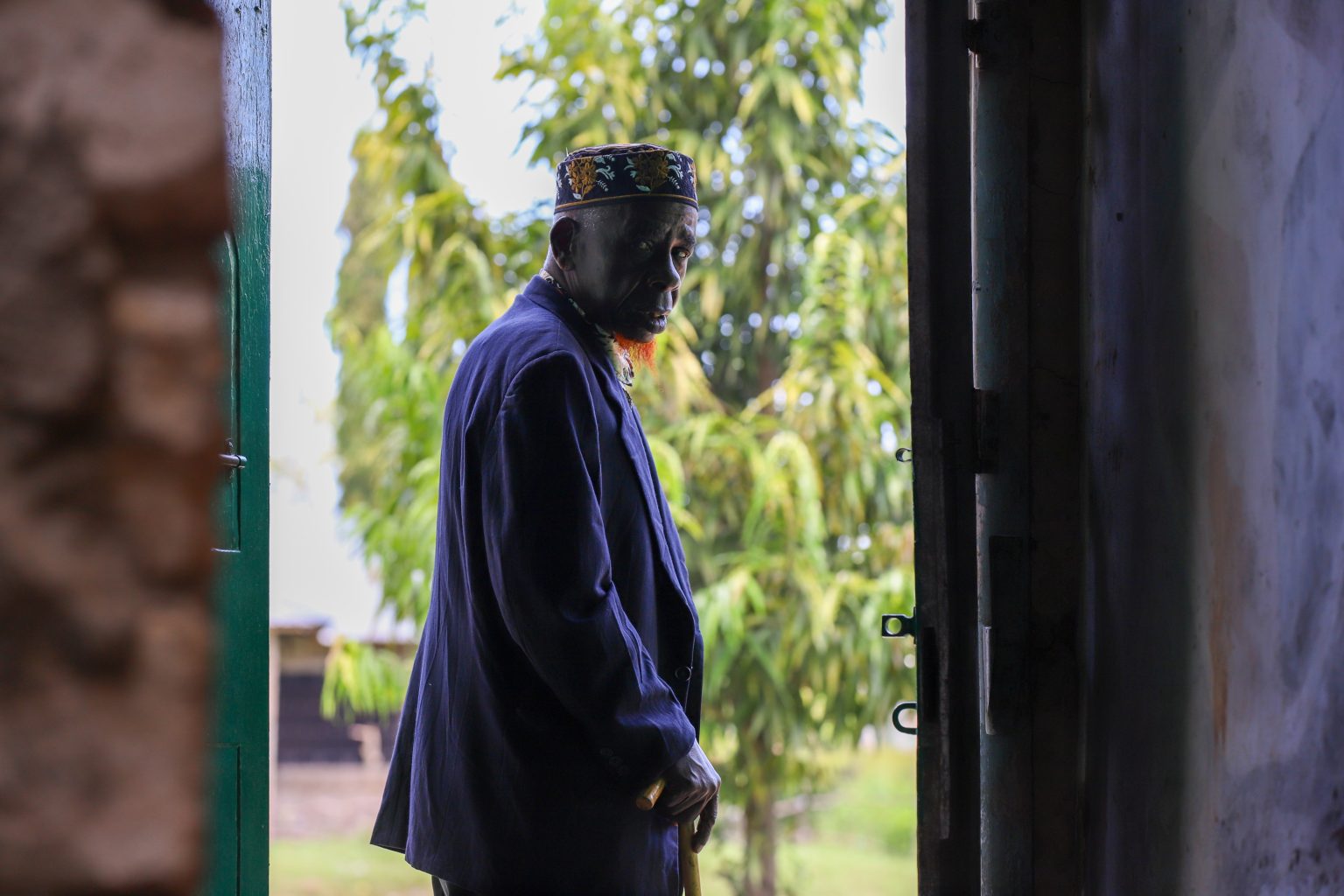
- The victims are aged between 24 and 60, and one of them has since passed on.
- Many were severely injured and hospitalized following brutal attacks, unlawful detention, and physical assault by Bamburi’s security personnel.
Editor’s note: Read the petition here.
Their hopes for justice seemed to be slipping away after initially taking on a multinational corporation and failing to hold it accountable for the brutal injuries they suffered.
The death of one of their own cast a shadow of despair, making it seem unlikely that they would ever bring the corporation to justice for the crimes they alleged.
However, 11 victims of dog attacks, assaults, and other severe human rights violations are now challenging Bamburi Cement PLC’s role in these abuses in court.
They are represented by the Kenya Human Rights Commission (KHRC), which on January 29, 2025, filed a legal claim before a constitutional court in Kenya, seeking to hold the multinational accountable for the harm suffered by the victims—residents of land parcels in Kwale that Bamburi claims ownership of. KHRC worked with the Kwale Mining Alliance (KMA) to bring this case.
The victims, aged between 24 and 60, include Mohamed Salim Mwakongoa, Ali Said, Abdalla Suleiman, Hamadi Jumadari, Abdalla Mohammed, and Omari Mbwana Bahakanda. Others are Shee Said Mbimbi, Omar Mohamed, Omar Ali Kalendi (deceased), Abdalla Jumadari, and Bakari Nuri Kassim.
Bamburi had hired a private security firm and deployed General Service Unit (GSU) officers to guard three adjoining land parcels, covering approximately 1,400 acres in Denyenye, Kwale. The GSU established a camp on the land, which has historically been accessed by residents who have long used established routes to reach the forest and the Indian Ocean.
For decades, these routes provided them with access to resources such as firewood, crops, and fish, which they relied on for their livelihoods. However, five years ago, when they attempted to collect firewood, harvest crops, and access the ocean through the land, Bamburi accused them of trespassing. The company’s private guards and GSU officers responded with force, setting dogs on them and assaulting them.
Many were severely injured and hospitalized following brutal attacks, unlawful detention, and physical assault by Bamburi’s security personnel. These incidents occurred despite the lack of clearly defined boundaries and the fact that the traditional access routes had never been contested.
According to the petition, GSU officers and private guards inflicted serious injuries by kicking, punching, and beating the victims with batons. Those who were arrested were neither taken to a police station nor charged with any offense. Despite their injuries, they were denied emergency medical care.
These actions were intended to intimidate residents, prevent them from accessing the beach, and suppress any historical claims to the land, the victims tell the court. Local police in Kwale failed to investigate the abuses, visit the crime scenes, or arrest any of the perpetrators, they add.
Now, the victims are seeking compensation for these violations. They have also asked the court to declare that their rights were violated through torture inflicted by Bamburi’s guards and GSU officers. Additionally, they want the court to rule that releasing guard dogs to attack them during arrests constituted an extreme and unlawful use of force.
Source: khrc.or.ke
Related posts:

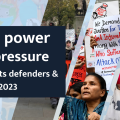 Breaking: Over 600 attacks against defenders have been recorded in the year 2023 globally- BHRRC report.
Breaking: Over 600 attacks against defenders have been recorded in the year 2023 globally- BHRRC report.
 Kaweeri Coffee land grabbing case re-trial resumes as evictees continue to suffer gross human rights violations.
Kaweeri Coffee land grabbing case re-trial resumes as evictees continue to suffer gross human rights violations.
 Criminalization of planet, land, and environmental defenders in Uganda is on the increase as 2023 recorded the soaring number of attacks.
Criminalization of planet, land, and environmental defenders in Uganda is on the increase as 2023 recorded the soaring number of attacks.
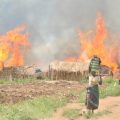 Local land grabbers evict villagers at night; foreign investors cultivate the same lands the next day
Local land grabbers evict villagers at night; foreign investors cultivate the same lands the next day

A land rights defender and his wife have been arrested, charged, and sent to prison.

Land Grabbing Crisis Escalates in Uganda: Mayiga Urges Citizens to Secure Land Documents

Seizing the Jubilee moment: Cancel the debt to unlock Africa’s clean energy future

Activism on Trial: Despite the increasing repressive measures, Uganda’s EACOP protesters are achieving unexpected victories in the country’s justice systems.

A decade of displacement: How Uganda’s Oil refinery victims are dying before realizing justice as EACOP secures financial backing to further significant environmental harm.

Activism on Trial: Despite the increasing repressive measures, Uganda’s EACOP protesters are achieving unexpected victories in the country’s justice systems.

Govt launches Central Account for Busuulu to protect tenants from evictions

Communities Under Siege: New Report Reveals World Bank Failures in Safeguard Compliance and Human Rights Oversight in Tanzania

Innovative Finance from Canada projects positive impact on local communities.
Over 5000 Indigenous Communities evicted in Kiryandongo District
Petition To Land Inquiry Commission Over Human Rights In Kiryandongo District
Invisible victims of Uganda Land Grabs
Resource Center
- LAND GRABS AT GUNPOINT REPORT IN KIRYANDONGO DISTRICT
- RESEARCH BRIEF -TOURISM POTENTIAL OF GREATER MASAKA -MARCH 2025
- The Mouila Declaration of the Informal Alliance against the Expansion of Industrial Monocultures
- FORCED LAND EVICTIONS IN UGANDA TRENDS RIGHTS OF DEFENDERS IMPACT AND CALL FOR ACTION
- 12 KEY DEMANDS FROM CSOS TO WORLD LEADERS AT THE OPENING OF COP16 IN SAUDI ARABIA
- PRESENDIANTIAL DIRECTIVE BANNING ALL LAND EVICTIONS IN UGANDA
- FROM LAND GRABBERS TO CARBON COWBOYS A NEW SCRAMBLE FOR COMMUNITY LANDS TAKES OFF
- African Faith Leaders Demand Reparations From The Gates Foundation.
Legal Framework
READ BY CATEGORY
Newsletter
Trending
-
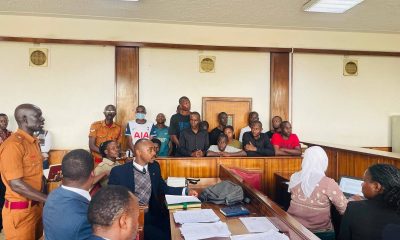
 SPECIAL REPORTS AND PROJECTS2 weeks ago
SPECIAL REPORTS AND PROJECTS2 weeks agoActivism on Trial: Despite the increasing repressive measures, Uganda’s EACOP protesters are achieving unexpected victories in the country’s justice systems.
-
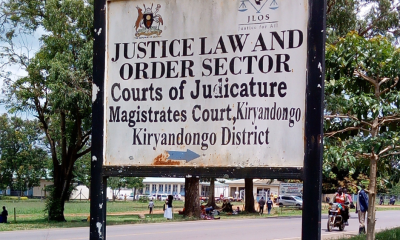
 DEFENDING LAND AND ENVIRONMENTAL RIGHTS3 days ago
DEFENDING LAND AND ENVIRONMENTAL RIGHTS3 days agoA land rights defender and his wife have been arrested, charged, and sent to prison.
-
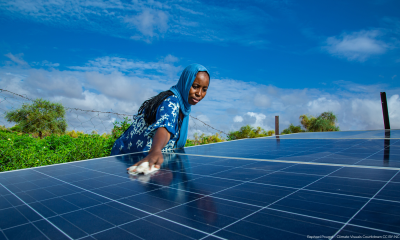
 SPECIAL REPORTS AND PROJECTS7 days ago
SPECIAL REPORTS AND PROJECTS7 days agoSeizing the Jubilee moment: Cancel the debt to unlock Africa’s clean energy future
-
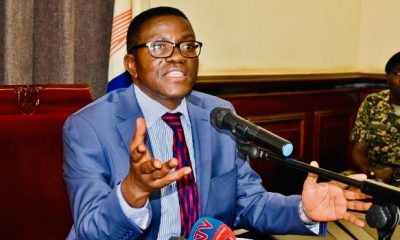
 MEDIA FOR CHANGE NETWORK7 days ago
MEDIA FOR CHANGE NETWORK7 days agoLand Grabbing Crisis Escalates in Uganda: Mayiga Urges Citizens to Secure Land Documents

